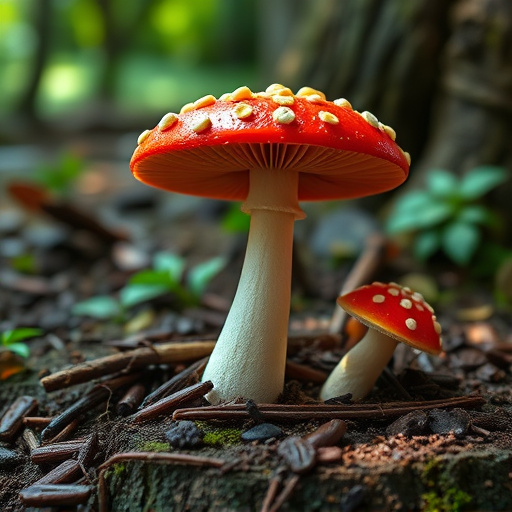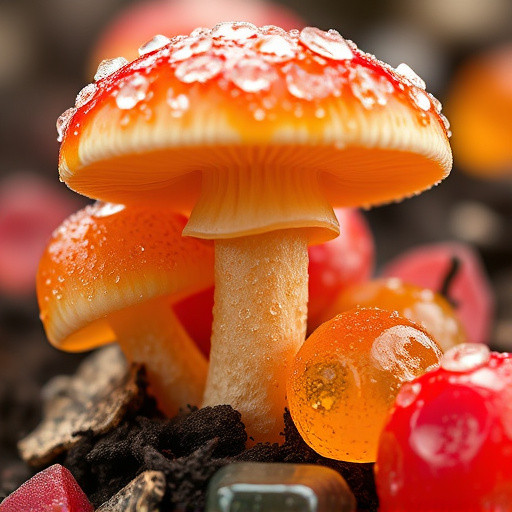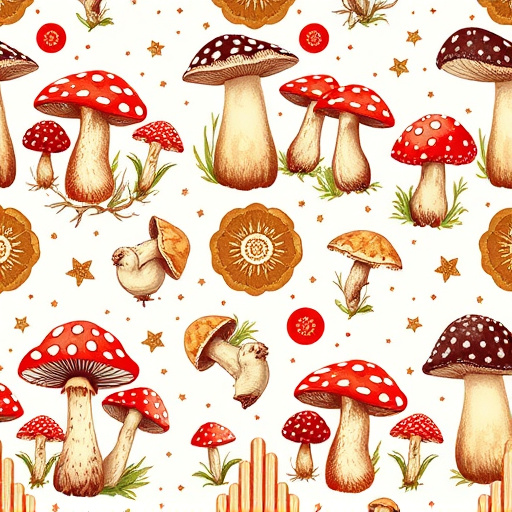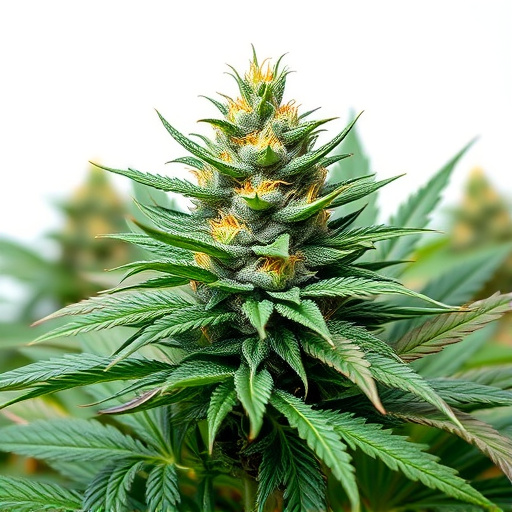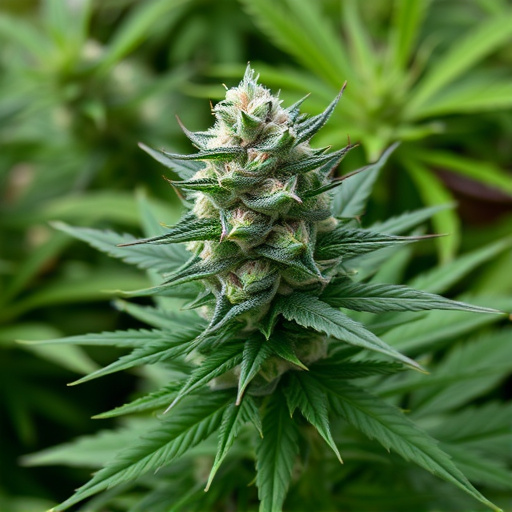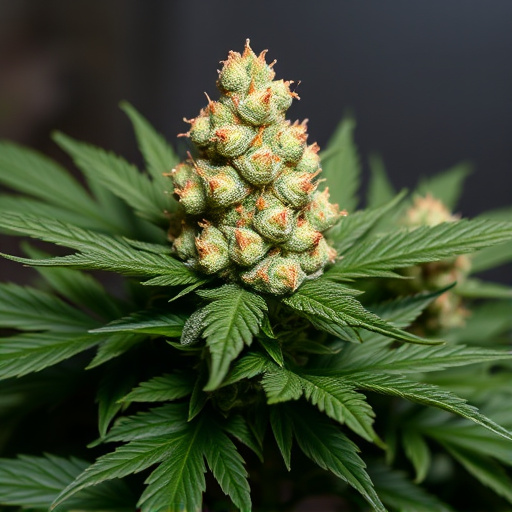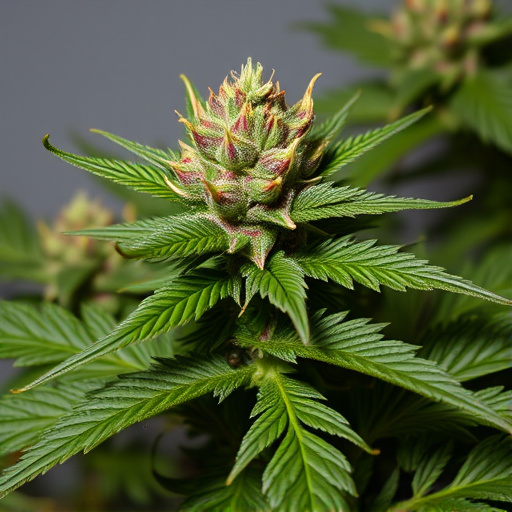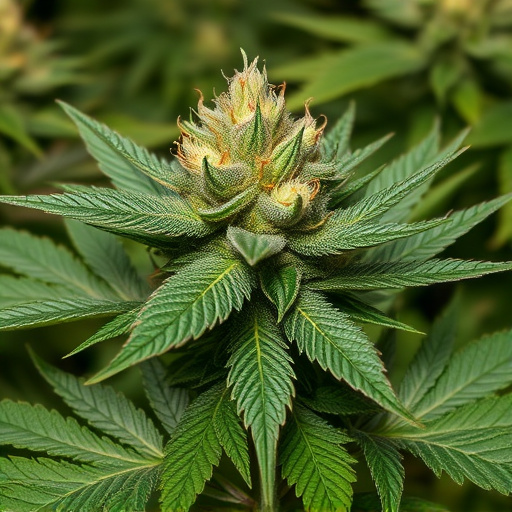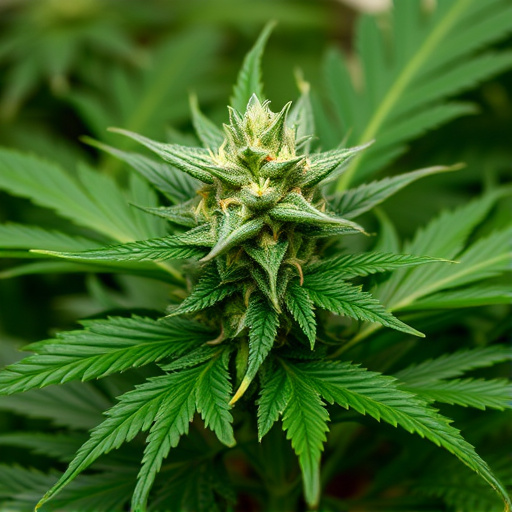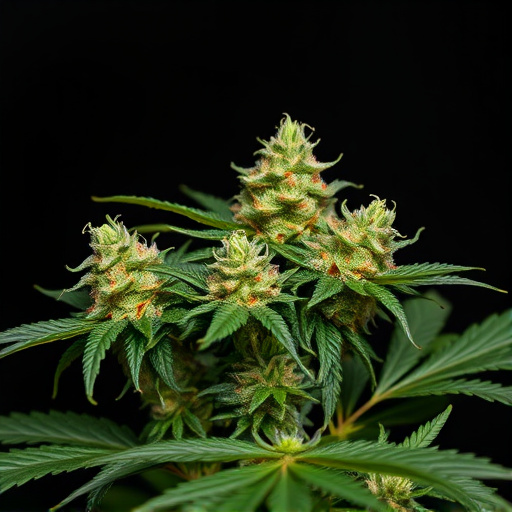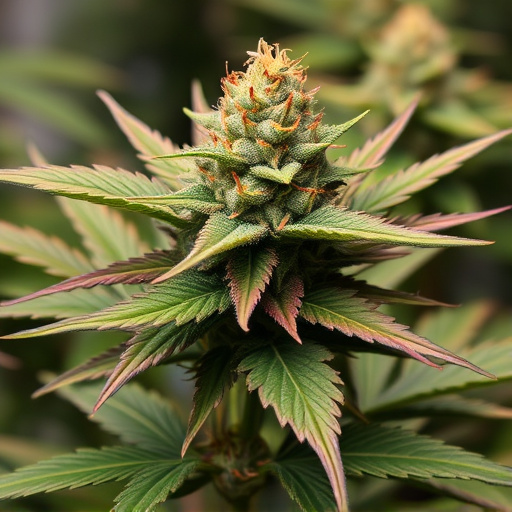Cannabis potency is determined by a complex interplay of chemistry, genetics, and cultivation practices. While tetrahydrocannabinol (THC) and cannabidiol (CBD) are primary drivers, terpenes influence their effects. OG Indica strains, known for high THC concentrations and sedative properties, are favored in the medical cannabis community for pain relief, sleep aid, and stress reduction. The visual appeal of anthocyanin pigments may hint at potential potency, but further research is needed to establish a reliable color-potency correlation across varieties.
“Uncover the intriguing connection between cannabis color and potency in this comprehensive guide. While often overlooked, the vibrant hues of this plant may hold secrets to its therapeutic effects. We explore how ‘OG Indica strains’, known for their distinct characteristics, can offer unique experiences.
Delve into the science behind cannabis chemistry and discover how color can influence cannabinoid composition. From the lab to the fields, we navigate the factors shaping potency, shedding light on why specific strains, like OG Indicas, have gained popularity among connoisseurs.”
- Understanding Cannabis Chemistry and Potency
- The Role of Color in Cannabinoid Composition
- OG Indica Strains: A Closer Look at Their Unique Properties and Perceived Effects
Understanding Cannabis Chemistry and Potency
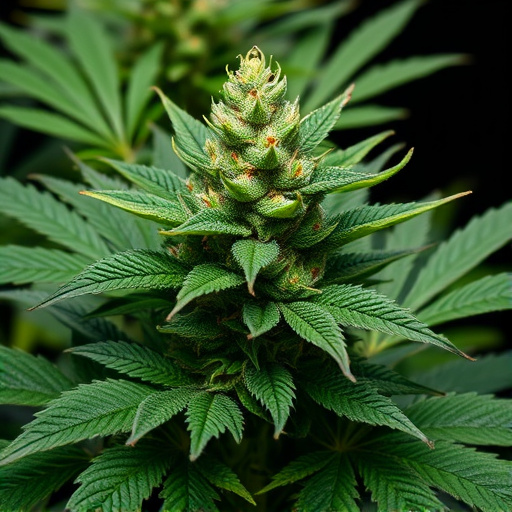
Cannabis potency is a multifaceted concept, deeply intertwined with its complex chemistry and diverse genetic profiles. Understanding the intricate interplay between different chemical compounds within cannabis is crucial to discerning why some strains pack a more potent punch than others. The primary active compounds in cannabis are tetrahydrocannabinol (THC) and cannabidiol (CBD), each contributing uniquely to its therapeutic and intoxicating effects. OG Indica strains, renowned for their calming and sedative properties, often boast higher THC concentrations, making them particularly potent.
The potency of cannabis isn’t merely a function of these primary compounds, however. Terpenes, aromatic compounds that give cannabis its distinct flavors and aromas, also play a significant role. Specific terpenes can either enhance or mitigate the effects of THC and CBD, adding complexity to the overall potency profile. This intricate chemistry means that even within the same strain, subtle variations in cultivation conditions, maturity, and extraction methods can lead to differences in potency, highlighting the importance of consistent quality control in the cannabis industry.
The Role of Color in Cannabinoid Composition
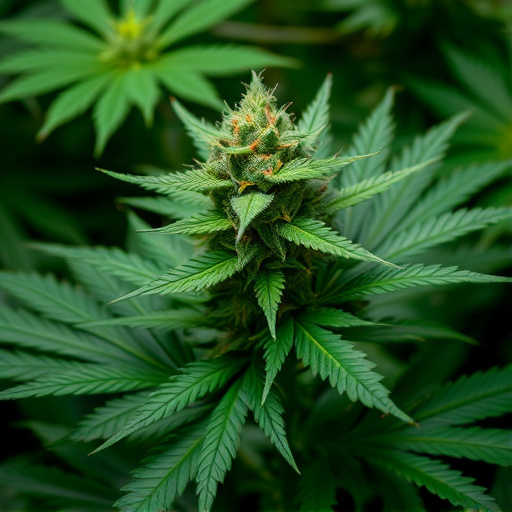
The visual appearance of cannabis, particularly its color, is often associated with potency and quality among consumers. However, the connection between color and cannabinoid composition is a complex topic that requires scientific scrutiny. Color in cannabis is primarily determined by pigments like chlorophyll (green), carotenoids (yellow, orange), and anthocyanins (red, purple) present in various parts of the plant, including trichomes and flowers.
These pigments not only contribute to the visual appeal but may also influence the plant’s cannabinoid profile. For instance, anthocyanins, responsible for red and purple hues, have been linked to higher levels of certain cannabinoids, such as THC, in some og indica strains. While early research suggests a potential correlation, further studies are needed to understand if color can reliably predict potency and the specific cannabinoid concentrations within cannabis varieties.
OG Indica Strains: A Closer Look at Their Unique Properties and Perceived Effects

OG Indica strains, often revered as the original and pure form of cannabis, have captivated users for decades. These varieties, passed down through generations, are known for their distinct properties and perceived effects, setting them apart from hybrid variants. The term ‘OG’ stands for ‘Original Gorilla,’ reflecting its roots in the legendary Afghan/Indian/Pakistani landraces that first garnered attention in California during the 1970s.
These strains typically offer a more intense sensory experience compared to modern hybrids. They are celebrated for their high THC levels, potent sedative effects, and ability to induce deep relaxation without overwhelming users with anxiety or paranoia. The unique combination of terpenes and cannabinoids in OG Indicas contributes to their renowned euphoria, pain relief, and sleep-inducing properties, making them a favorite among medical cannabis patients seeking relief from insomnia, chronic pain, and stress-related disorders.
In exploring whether color affects cannabis potency, we’ve discovered that while visual cues like color can’t directly determine a strain’s strength, they may offer hints about its cannabinoid composition. Specifically, OG Indica strains, known for their rich history and distinctive characteristics, often exhibit deeper hues due to higher levels of cannabinoids like THC. Understanding the connection between color and cannabinoid profiles, such as those found in OG Indica strains, can empower consumers to make more informed choices based on their desired effects. Further research is needed to fully unravel the intricate relationship between color and cannabis potency, but this knowledge expands our understanding of these complex plants.
